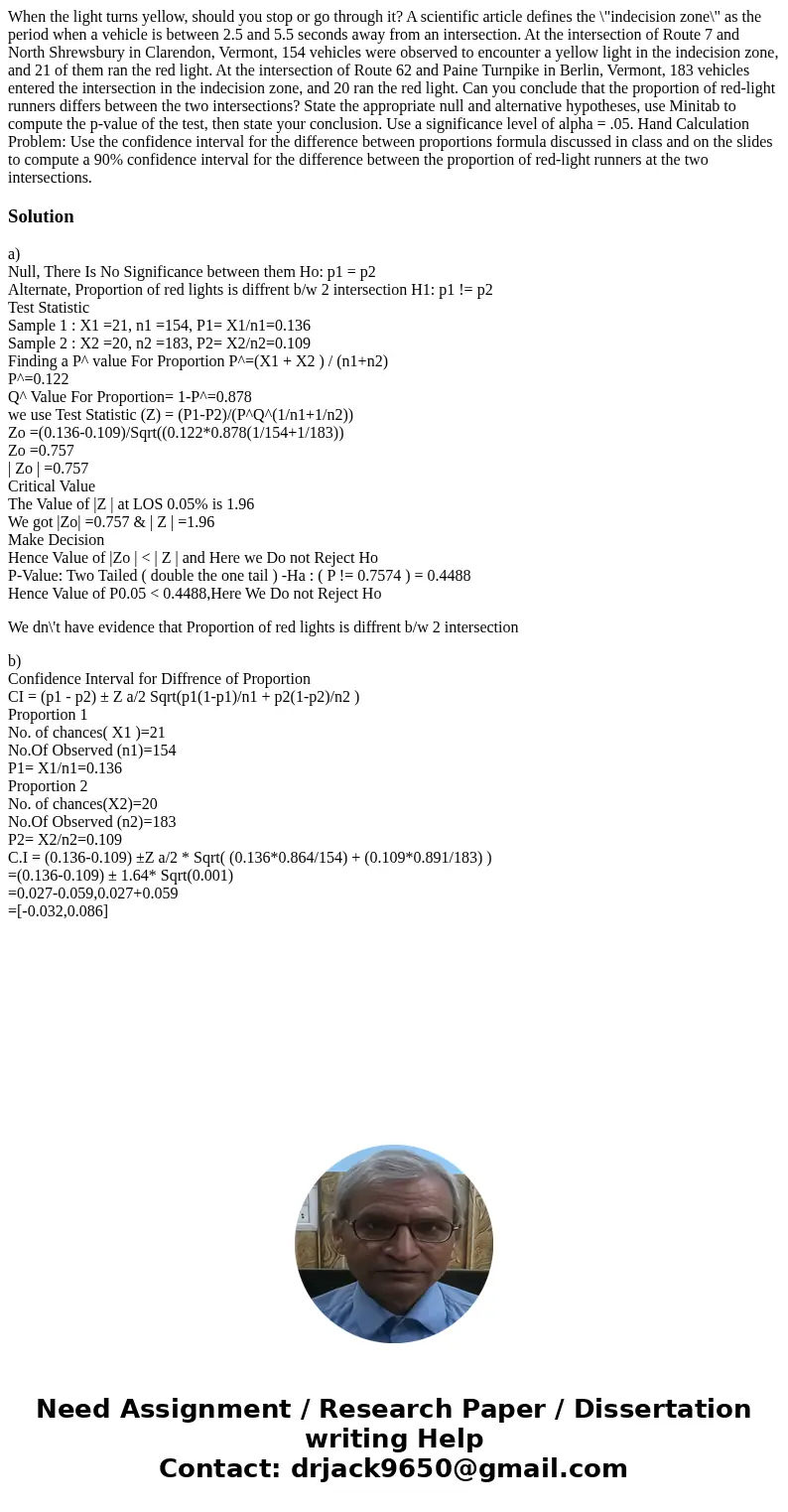When the light turns yellow should you stop or go through it
Solution
a)
Null, There Is No Significance between them Ho: p1 = p2
Alternate, Proportion of red lights is diffrent b/w 2 intersection H1: p1 != p2
Test Statistic
Sample 1 : X1 =21, n1 =154, P1= X1/n1=0.136
Sample 2 : X2 =20, n2 =183, P2= X2/n2=0.109
Finding a P^ value For Proportion P^=(X1 + X2 ) / (n1+n2)
P^=0.122
Q^ Value For Proportion= 1-P^=0.878
we use Test Statistic (Z) = (P1-P2)/(P^Q^(1/n1+1/n2))
Zo =(0.136-0.109)/Sqrt((0.122*0.878(1/154+1/183))
Zo =0.757
| Zo | =0.757
Critical Value
The Value of |Z | at LOS 0.05% is 1.96
We got |Zo| =0.757 & | Z | =1.96
Make Decision
Hence Value of |Zo | < | Z | and Here we Do not Reject Ho
P-Value: Two Tailed ( double the one tail ) -Ha : ( P != 0.7574 ) = 0.4488
Hence Value of P0.05 < 0.4488,Here We Do not Reject Ho
We dn\'t have evidence that Proportion of red lights is diffrent b/w 2 intersection
b)
Confidence Interval for Diffrence of Proportion
CI = (p1 - p2) ± Z a/2 Sqrt(p1(1-p1)/n1 + p2(1-p2)/n2 )
Proportion 1
No. of chances( X1 )=21
No.Of Observed (n1)=154
P1= X1/n1=0.136
Proportion 2
No. of chances(X2)=20
No.Of Observed (n2)=183
P2= X2/n2=0.109
C.I = (0.136-0.109) ±Z a/2 * Sqrt( (0.136*0.864/154) + (0.109*0.891/183) )
=(0.136-0.109) ± 1.64* Sqrt(0.001)
=0.027-0.059,0.027+0.059
=[-0.032,0.086]

 Homework Sourse
Homework Sourse